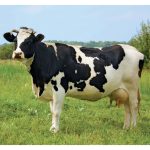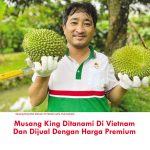For more than a decade, Musang King has reigned as the undisputed monarch of Malaysia’s fruit kingdom. Known for its creamy texture, bold aroma, and bittersweet perfection, this durian variety—officially known as D197—transformed from a regional delicacy into a global luxury fruit. But as every king’s reign faces its twilight, farmers, exporters, and investors now ask: how long can this legend continue to rule?
The Golden Age of Musang King
The rise of Musang King is nothing short of phenomenal. Around 2010, surging demand from China turned small durian orchards into gold mines. Prices skyrocketed from RM10 to RM80 per kilogram at farm level within a few years. Export volumes followed suit, and cold-chain logistics allowed fresh durians to reach Shanghai and Beijing within 48 hours.
In Pahang, Raub became the epicenter of this “green gold rush,” with land prices multiplying tenfold. Thousands of new growers joined in, converting oil palm estates and secondary forests into durian plantations. Musang King wasn’t just a fruit—it became a symbol of prosperity, a national pride, and an agricultural success story.
Cracks in the Throne
Yet, every boom comes with its challenges. Oversupply, environmental concerns, and the lack of genetic diversity are emerging threats. As thousands of hectares mature simultaneously, the market faces seasonal gluts, driving prices down sharply during peak harvests. In 2024, farm-gate prices in some regions fell below RM25/kg—a stark contrast to the golden years.
Climate change adds another layer of uncertainty. Prolonged droughts, unpredictable flowering, and disease pressures—especially Phytophthora palmivora root rot—threaten long-term productivity. The monoculture nature of Musang King plantations also increases vulnerability, much like how the Cavendish banana faces global disease threats today.
Meanwhile, consumer preferences are shifting. Chinese buyers, once obsessed with Musang King, are now exploring other varieties—like Black Thorn, Tupai King 226 and other premium varieties. These newer varieties offer distinct flavor profiles and could diversify future markets.
Evolution, Not Extinction
Despite these warning signs, Musang King is far from losing its crown. Its name recognition, established export network, and emotional value make it too iconic to fade quickly. However, the industry must evolve to sustain its legacy.
Progressive growers are adopting mixed-variety orchards, precision irrigation, and soil health management to stabilize yields and quality. Value-added processing—such as frozen pulp, paste, and desserts—extends market reach and reduces post-harvest losses. The push for Musang King Geographical Indication (GI) protection further strengthens branding and authenticity.
In the long run, sustainability will define the fruit’s survival. Reforestation buffers, organic fertilization, and integrated pest management could help Musang King transition from a short-lived boom crop into a resilient agro-heritage symbol.
The Verdict
Musang King’s reign may no longer be absolute, but it remains a cornerstone of Malaysia’s high-value fruit industry. The “legend” will endure—not because it stays at the top forever, but because it adapts, diversifies, and continues to inspire innovation.
The question, therefore, isn’t how long Musang King will thrive—but how well we nurture its legacy for the next generation of durian dreamers.
Source: Professional Platform
Note: For Reference Only










